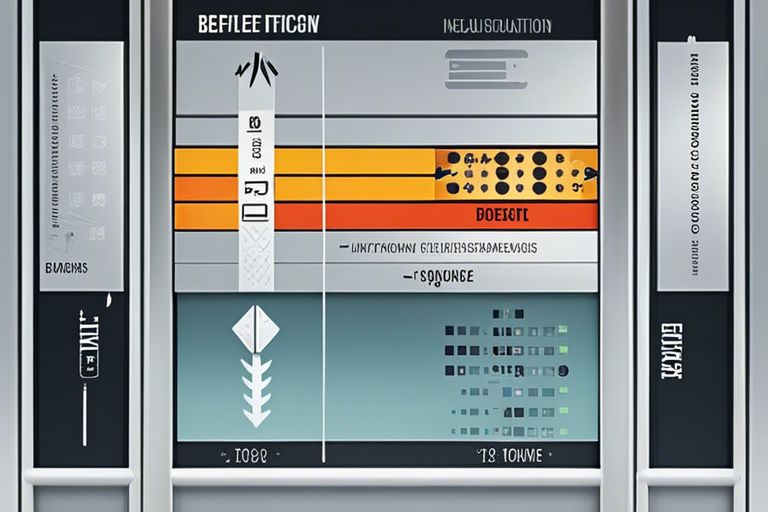Are you looking to upgrade your home with secure and energy-efficient aluminium windows? Installing aluminium windows is a great way to enhance the security and energy efficiency of your home. However, it’s important to ensure that they are properly installed to maximise their effectiveness. In this how-to guide, we will walk you through the process of properly installing aluminium windows to ensure a secure and energy-efficient fit for your home.
Key Takeaways:
- Proper measurements: Take accurate measurements for the window frame and ensure it fits snugly to prevent any gaps that could lead to air leakage and reduced energy efficiency.
- Use quality materials: Invest in high-quality aluminium windows and ensure they are installed with premium sealants and insulation materials to enhance security and energy performance.
- Professional installation: Hire experienced professionals to install the aluminium windows properly, ensuring they are tightly sealed and aligned for maximum security and energy efficiency.
Pre-Installation Considerations
Before you start the installation process, there are several important factors to consider to ensure a secure and energy-efficient fit for your aluminium windows. Taking the time to address these pre-installation considerations will ultimately save you time and effort in the long run, and ensure a successful installation that meets your needs and expectations.
Factors Affecting Aluminum Window Installation
When installing aluminium windows, there are several key factors that can affect the process and the final outcome. These include the type of frame material, the condition of the existing window opening, the climate and weather conditions in your area, the orientation of the window, and any local building codes and regulations. It’s important to carefully assess these factors before beginning the installation, as they will have a direct impact on the performance and longevity of your aluminium windows. This assessment will help you make informed decisions about the materials and methods you will use, and ensure that your installation meets all necessary safety and energy efficiency standards. This pre-planning will help you avoid potential issues and extra costs down the line.
Measuring for Accurate Fit
Measuring for accurate fit is crucial to the success of your aluminium window installation. By measuring the opening size, window dimensions, and depth of the wall cavity carefully, you can ensure that your windows will fit securely and provide the best possible insulation and weatherproofing. Taking precise measurements will also help you avoid issues such as drafts, leaks, and improper sealing. Use a tape measure and level to take accurate measurements, and double-check them before proceeding with the installation. This attention to detail will help you achieve a professional-looking and high-performing result.

How-To: The Installation Process
Now that you have chosen aluminium windows for your home, it’s time to install them properly. A Secure and energy-efficient fit is crucial for the longevity and effectiveness of your windows. Here is a step-by-step guide on how to install aluminium windows for a secure and energy-efficient fit.
Required Tools and Materials
Before starting the installation process, you will need to gather the necessary tools and materials. These include:
- Aluminium windows
- Measuring tape
- Screwdriver
- Drill
- Sealant
- Insulation strips
Ensure that you have all the required tools and materials ready before you begin the installation process.
Step-by-Step Installation Guide
Here is a step-by-step guide to properly installing aluminium windows for a secure and energy-efficient fit.
Step 1: Measure the window opening accurately to ensure the right fit for your aluminium windows.
Step 2: Prepare the window opening by removing any old windows and cleaning the area thoroughly.
Step 3: Apply sealant along the edges of the opening to create a watertight seal for your new windows.
Step 4: Place the aluminium window into the opening, ensuring a snug fit.
Step 5: Secure the window in place with screws, ensuring it is level and plumb.
Step 6: Apply insulation strips around the window frame to improve energy efficiency.
Following these steps will ensure that your aluminium windows are installed securely and provide an energy-efficient fit for your home.
Advanced Tips for Enhanced Performance
When it comes to installing aluminium windows for a secure and energy-efficient fit, there are advanced tips you can follow to further enhance their performance.
- Consider installing exterior storm windows with Low-E coating to improve energy efficiency. This helps to reduce heat transfer and improve insulation, ultimately lowering your energy bills. For more information on this, visit Install Exterior Storm Windows with Low-E Coating.
Additional Security Features to Consider
When it comes to the security of your home, you want to ensure that your aluminium windows offer the best protection. Consider installing reinforced locks or security bars to add an extra layer of protection to your windows. These additional security features can provide you with peace of mind, knowing that your home is well-protected.
Maximizing Energy Efficiency with Complementary Upgrades
To maximise the energy efficiency of your aluminium windows, consider complementary upgrades such as installing window films or applying weather-stripping around the frame. These upgrades can help to further reduce heat loss and improve insulation, ultimately saving you money on your energy bills. It’s important to consider these additions to ensure you are getting the most out of your aluminium windows.

Properly Installing Aluminium Windows: A Secure and Energy-Efficient Fit
Upon reflecting on the comprehensive guide to installing aluminium windows and doors, you have gained valuable insights into the crucial steps for achieving a secure and energy-efficient fit. By following the expert advice provided, you will be able to ensure a proper installation that maximises security and energy efficiency in your home. From choosing the right materials to sealing and finishing, every step is essential in creating a long-lasting and effective solution. For more detailed instructions, you can refer to The Complete Guide to Installing Aluminium Windows and Doors in Kenya.
FAQ
Q: What are the initial steps for properly installing aluminium windows?
A: The first step is to measure the window opening accurately to ensure a secure fit. Then, remove the old window frame and clean the opening thoroughly.
Q: What type of sealant should be used for installing aluminium windows?
A: We recommend using a high-quality silicone-based sealant to ensure water and air tightness around the window frame.
Q: How should the aluminium window frame be installed?
A: The frame should be securely anchored to the building structure using appropriate fasteners. It is crucial to follow the manufacturer’s guidelines for proper installation.
Q: What are the key considerations for achieving energy efficiency when installing aluminium windows?
A: It is essential to ensure that the window frame is properly insulated and sealed to prevent air leakage. Additionally, using double or triple glazed glass can significantly improve energy efficiency.
Q: How can security be enhanced when installing aluminium windows?
A: To enhance security, consider using multi-point locking systems and laminated or toughened glass. These measures can significantly improve the security of the windows.
Q: Is professional assistance necessary for installing aluminium windows?
A: While it is possible to install aluminium windows as a DIY project, it is highly recommended to seek professional assistance, especially for larger or more complex installations, to ensure proper fitting and sealant application.
Q: How can maintenance be carried out for aluminium windows after installation?
A: Regular cleaning and inspection of the sealant and hardware are essential for maintaining the windows’ performance. It is also important to address any issues such as loose screws or damaged sealant promptly to prevent further damage.






